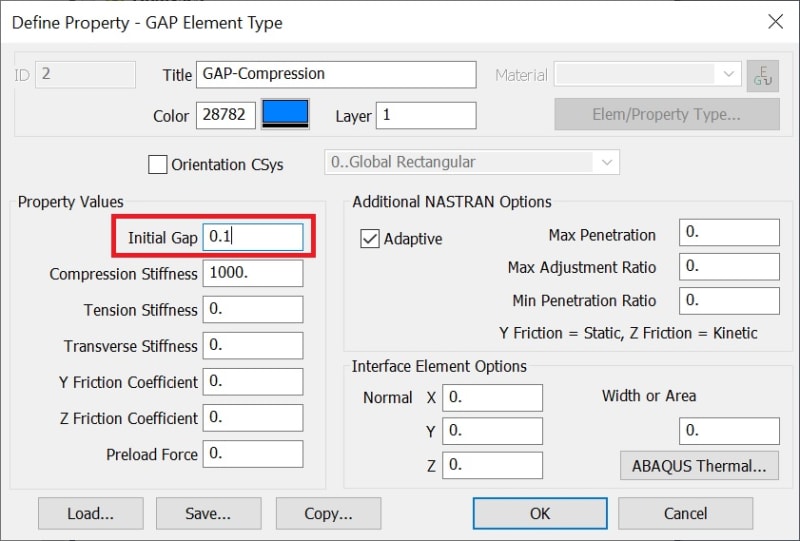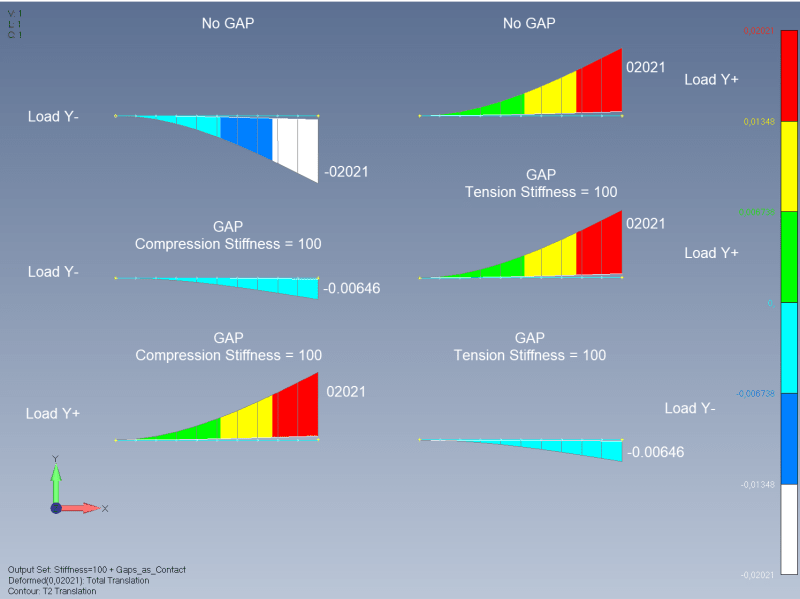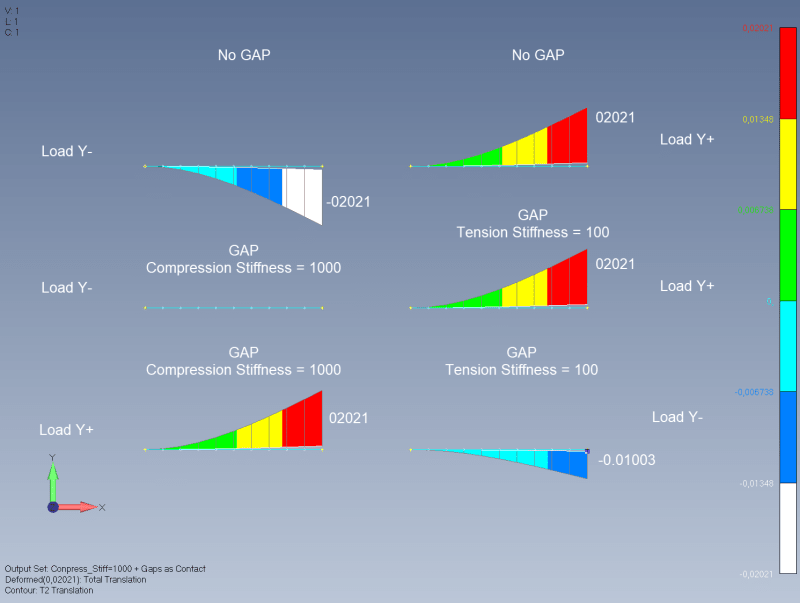TheMesh
Aerospace
- Aug 28, 2023
- 3
Hello!
I have some issues with GAPs in my test model.
I test the behavior of Gap elemens in tensile and compressive loading. So, there is the fixed beam with the force 100N on the free end. Also that end is supported with the GAP element.
First I have modeled the beam without the gaps to get the reference displacements in -100N and then in +100N.
Second step was the gap addition. Bulk Data option "Gaps as Contact" was turned on. Firstly GAP element had only Compressive stiffness 100N/m and tensile/compressive load was applied. Secondly GAP element had only Tension stiffness 100N/m and tensile/compressive load was applied. This time everyting is fine - gaps compress with -100N (as contact elements) and open with +100N.
On the Third step I changed only the Compression stiffness to 1000N/m and repeated the loading. This time something was wrong. The displacement of the beam supported by GAP with Tension stiffness didn`t matched the displacement of the same beam from the previous loading (when GAP Compression stiffness was 100N/m). So, how could it be as I didn`t changed the Tension stiffness at all ?
Best regards, TheMesh
I have some issues with GAPs in my test model.
I test the behavior of Gap elemens in tensile and compressive loading. So, there is the fixed beam with the force 100N on the free end. Also that end is supported with the GAP element.
First I have modeled the beam without the gaps to get the reference displacements in -100N and then in +100N.
Second step was the gap addition. Bulk Data option "Gaps as Contact" was turned on. Firstly GAP element had only Compressive stiffness 100N/m and tensile/compressive load was applied. Secondly GAP element had only Tension stiffness 100N/m and tensile/compressive load was applied. This time everyting is fine - gaps compress with -100N (as contact elements) and open with +100N.
On the Third step I changed only the Compression stiffness to 1000N/m and repeated the loading. This time something was wrong. The displacement of the beam supported by GAP with Tension stiffness didn`t matched the displacement of the same beam from the previous loading (when GAP Compression stiffness was 100N/m). So, how could it be as I didn`t changed the Tension stiffness at all ?
Best regards, TheMesh






